
After missing some sword-clashing action for almost 6 years, Soul Calibur makes a graceful return to form with its latest entry Soul Calibur VI, which is also its first outing in the current gen platforms. This latest installment acts as a reboot to the entire series, expanding on the story told in the original game, while retaining features that pushed the series further in previous main-line games. But will this retelling of the eternal tale of souls and swords stand out amongst the relatively fresher fighting games out there? Here’s our full review of Soul Calibur VI.
As a retelling of the events of the first Soul Calibur game, we are taken to the game’s events between 1583 through 1590, albeit with slight deviations and expanding upon the original story. Soul Calibur VI’s story is told through two modes: Soul Chronicle and Libra of Souls. Soul Chronicle is an extensive story mode featuring a main story perspective told through characters Kilik, Maxi and Xianghua, while all other characters having each of their own story lines. It is presented in a way where you’d know which events happen relative to the overall timeline and other characters, so storywise, it might be a little bit overwhelming to take in, but it makes it a lot less confusing if you want to follow the entire story.
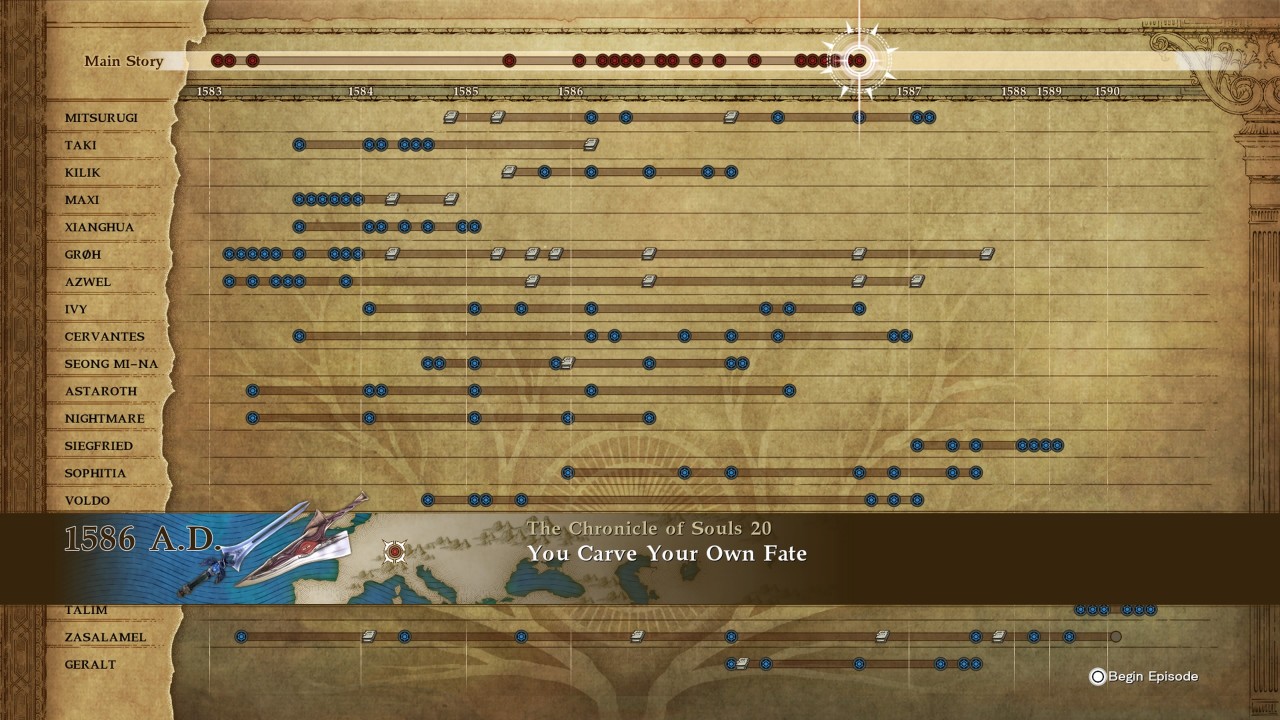
Libra of Souls on the other hand is an RPG-esque story mode where you get to play as a custom character through a lengthy campaign, which expands upon the overall story of Soul Calibur VI by a whole lot. While the main story is quite lengthy on its own already, there are tons more side quests to complete which builds upon the story through hidden records you unlock as you encounter the main cast of Soul Calibur, and more powerful weapons to equip. You progress through Libra of Souls by taking your character across a world map, following a main campaign line, and in each point of the map, you can explore surrounding areas for a fee to fight other characters or unlock story threads. When exploring surrounding areas, there’s a chance for random encounters to happen, wherein being defeated in these random encounters will send you back to your original destination while charging you for the full fee of the exploration – including all consumables you’ve consumed through the travel. You can also hire mercenaries, which are actually characters created by other players, to play through your quests.

In Libra of Souls, your character is also free to change their fighting styles by equipping weapons you can buy from stores you find along your travel, or through weapons you pick up after completing quests and side quests.
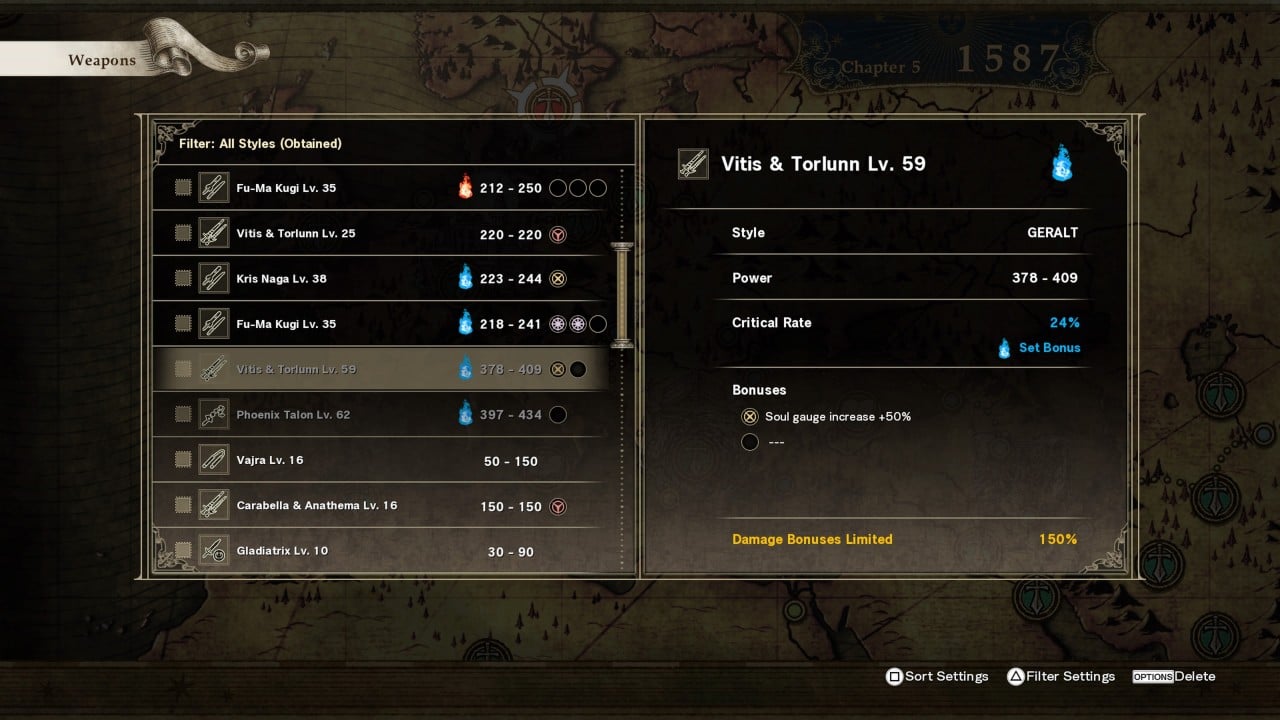
While both modes modes are story-rich, I just find it a little lacking in terms of delivery. The stories are told ala visual novel, where you read through character dialogue accompanied by their portraits. In Soul Chronicle mode, these a fully voiced, but in Libra of Souls it’s not. There’s also a very limited amount of in-game cutscenes (there are no CG cutscenes as all cutscenes are rendered in-game) which is pretty disappointing. In-game cutscenes only happen during pivotal points of the game, which I think is a missed opportunity to showcase some great fighting choreography and cinematography as reading through lines upon lines of dialogue isn’t really something I’d expect from a fighting game.
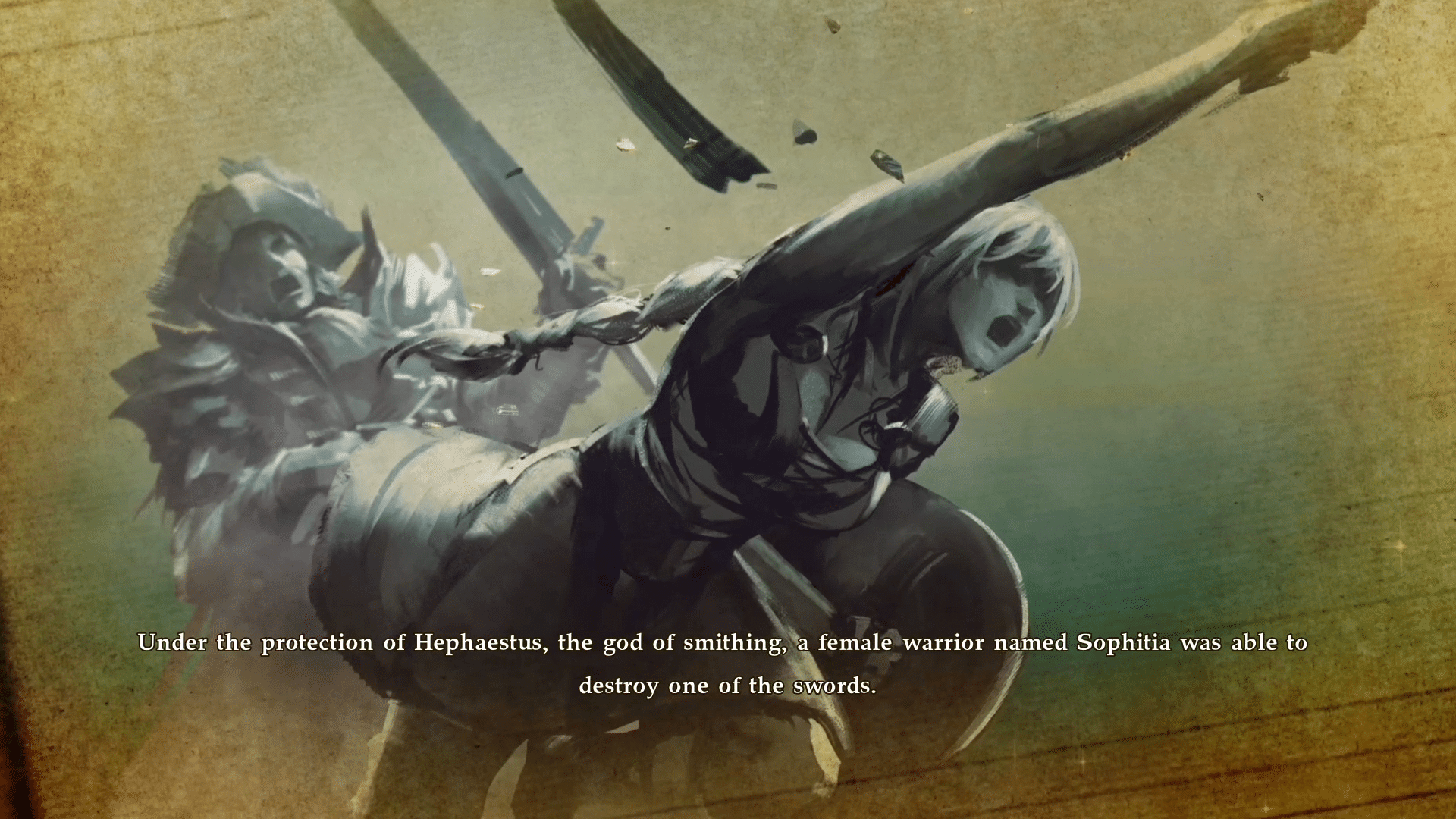
Also, you can’t import characters you create in Creation mode in Libra of Soul mode, so if you’ve already made characters in creation mode hoping to take them into the Libra of Souls mode, you’re out of luck. You’ll have to recreate them again in Libra, which I find odd.
Lasly, Libra of Souls tends to be grindy as there are a lot of difficulty spikes in the main questline. You’ll be forced to take on side quests just to obtain gear and level up to match the level of the enemy. Then at times, you’ll receive gear drops that doesn’t scale to your level. I once got a drop of a level 62 gear while I was only at level 30 or so which can be quite frustrating.
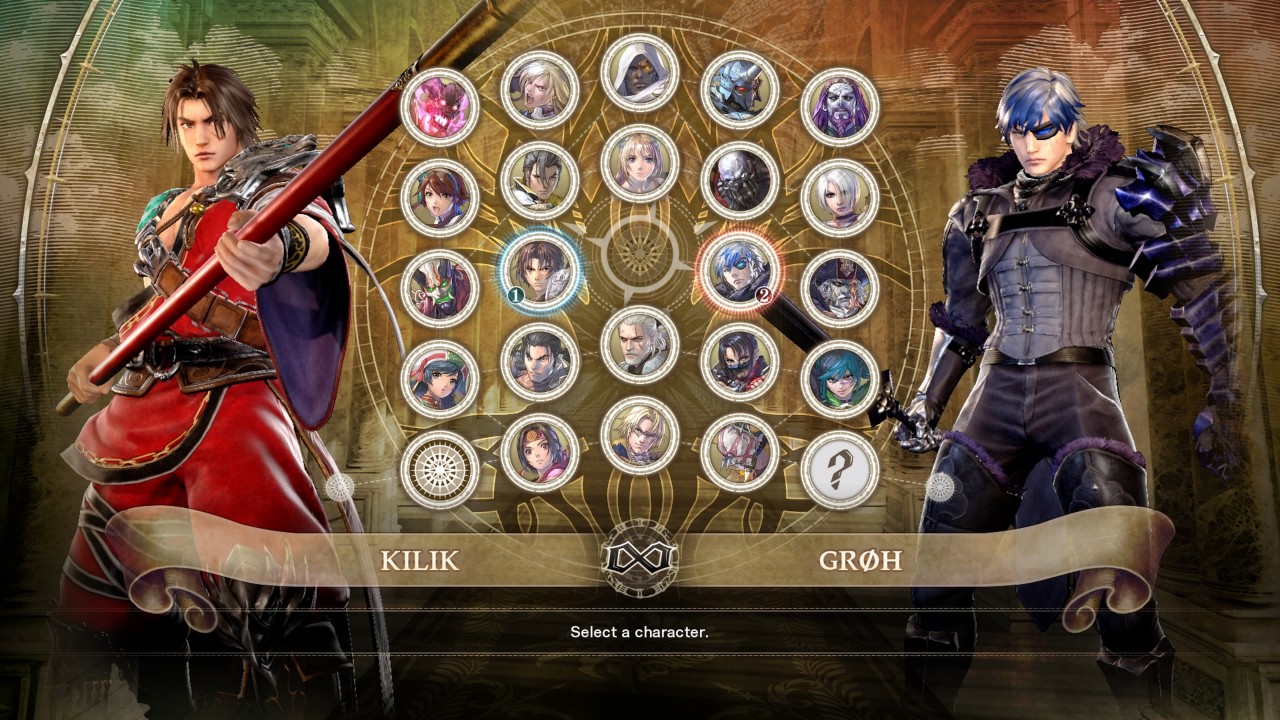
Classic characters from the original Soul Calibur make a comeback as playable characters except for Hwang, Rock, and Edge Master who appear in-game rather as supporting characters. Since the game takes place in the time of Soul Calibur, certain characters aren’t present yet, or doesn’t yet have a major role to play such as Cassandra, Yun Seong, Hilde, Setsuka, and the newer generation characters introduced in SCV such as Pyrrha, Patroklos, Viola, Xiba, Yan Leixia, Natsu, and Z.W.E.I. Some characters also make an appearance much earlier in the timeline, with Sazalamel and Tira now being present in this timeline. New characters are also introduced including Groh, a dual saber wielding knight from the Aval Organization, and Azwel, a mysterious figure from the same organization, wielding gauntlets infused with fragments of both Soul Edge and Soul Calibur which lets him conjure weapons out of thin air.
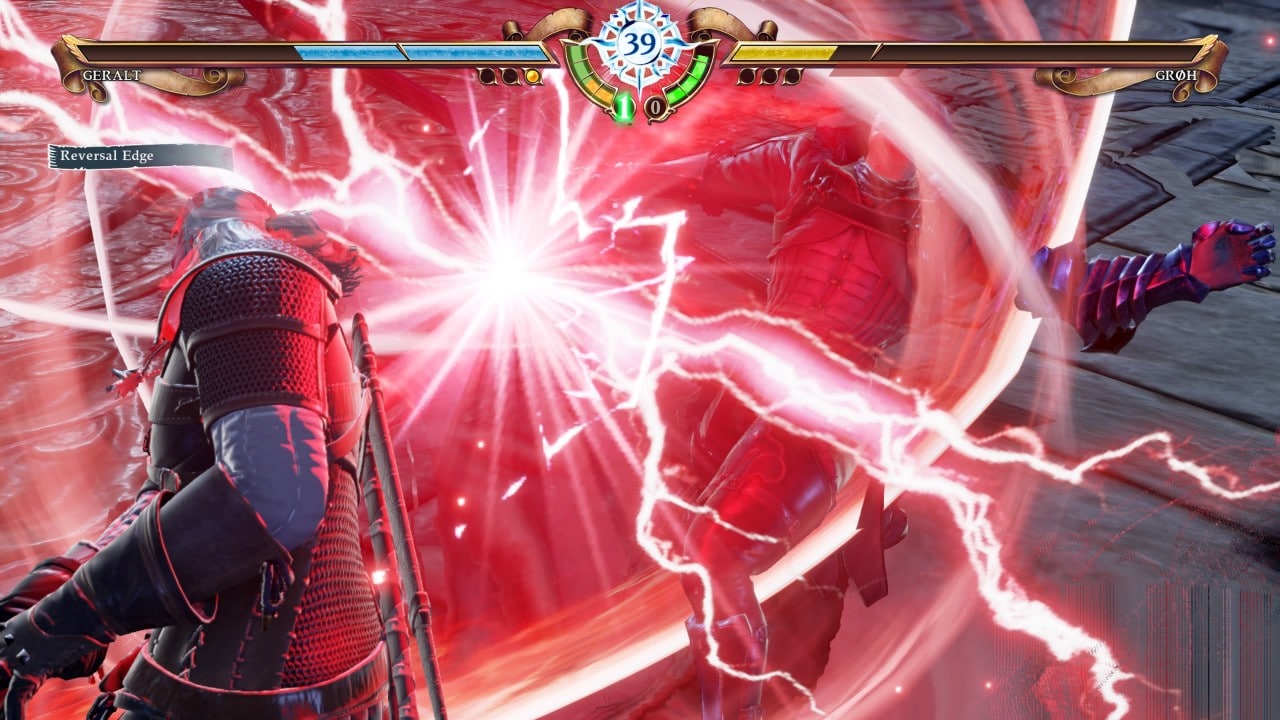
Surprisingly, Lizardman isn’t a main playable character in this game and was rather relegated as a creation template for customer characters.
Geralt of Rivia of the Witcher franchise makes a guest appearance in the game as a playable character, who seems to be a perfect fit in the game. His moves from the games translate very well to Soul Calibur VI and can be a formidable character to master.
Roster-wise, there’s a great variety of characters to master, including long time veteran characters of the series, with newcomers that are certainly equally as fun to play.
Soul Calibur VI plays and feels like the same Soul Calibur game you’ve known to love, while introducing new major gameplay changes, and reintroduces gameplay mechanics of past games with improvements. New to this installment is the Reversal Edge, which is a sort of parry which turns into a flashy slow motion rock-paper-scissors exchange between the fighters when performed correctly.
Past mechanics like armor break and guard impact make a comeback, with guard impact now free of gauge cost to perform. Critical Edge, Soul Calibur’s version of a super combo is mostly unchanged, while Soul Charge that was introduced in SCIII has been changed to enable characters to perform a transformation for a limited time.
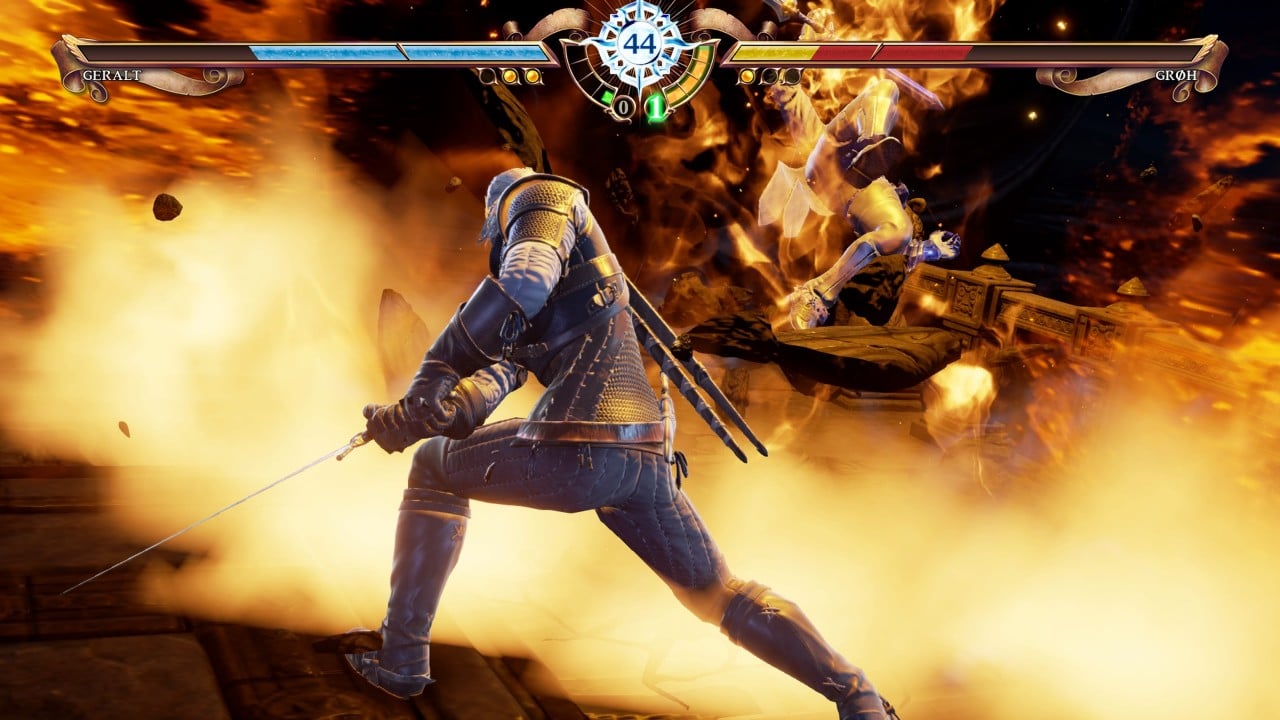
While the game is very simple enough to learn with very simple button inputs, it’s still quite difficult to master as fights can be very dynamic thanks to these new gameplay mechanics, and to an expanded character moveset
One feature I particularly liked is the Creation mode, where you can tweak the appearance of the main characters, or create an entirely new one from scratch. The possibilities are almost endless, I myself was so engrossed and made some Filipino superhero themed characters, and some characters from popular franchises like Cloud of FFVII, and anime like Kenshin Himura from Ruroni Kenshin. Unfortunately most face and hair selections are limited so it’s hard to pull off a one-to-one replication.
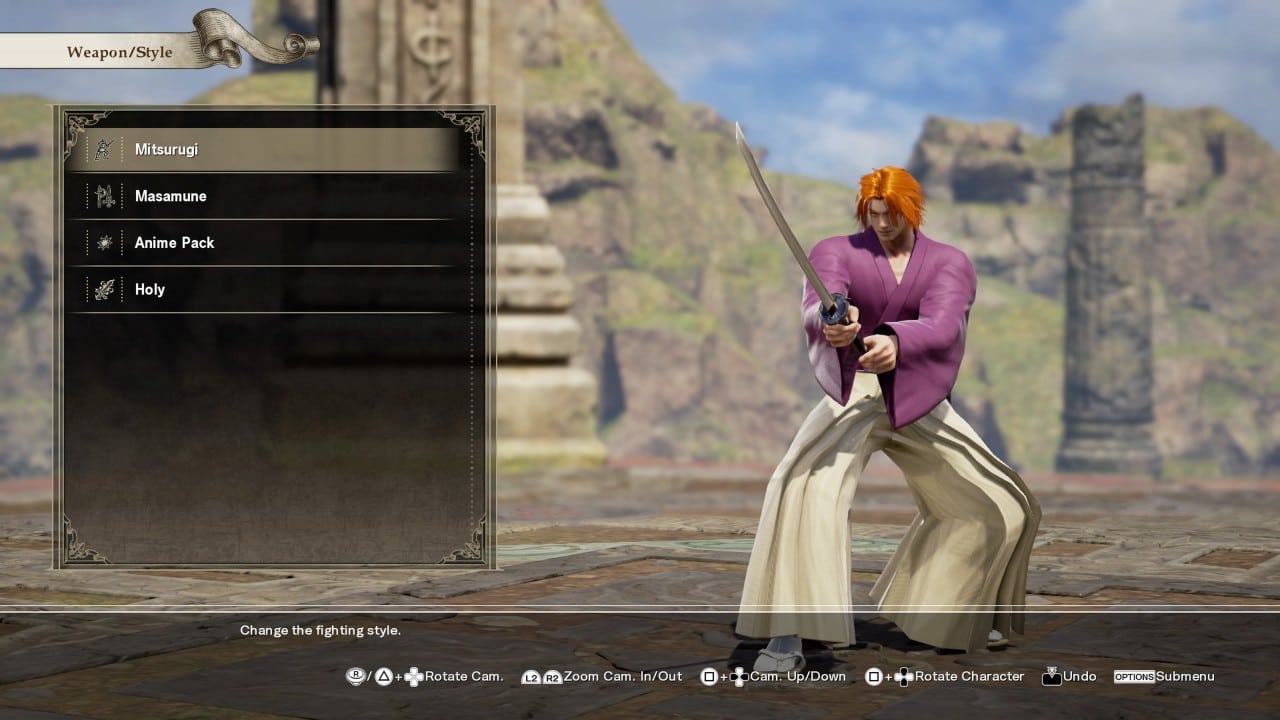
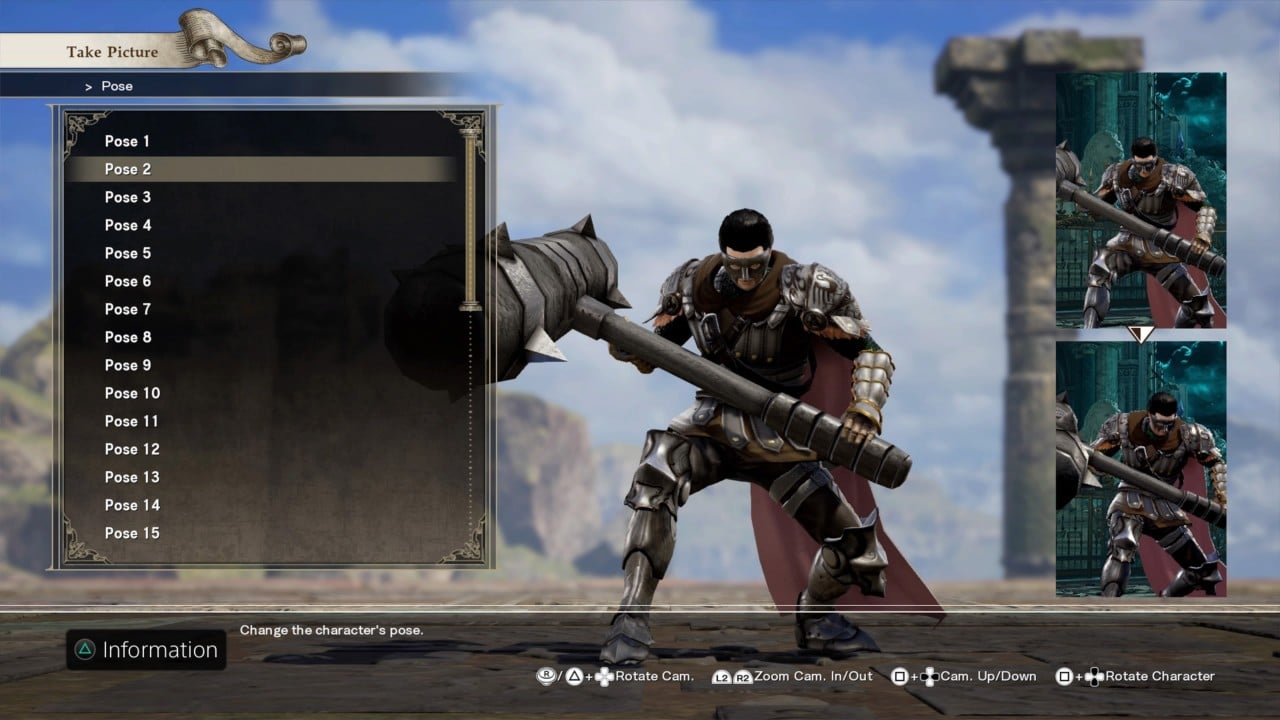
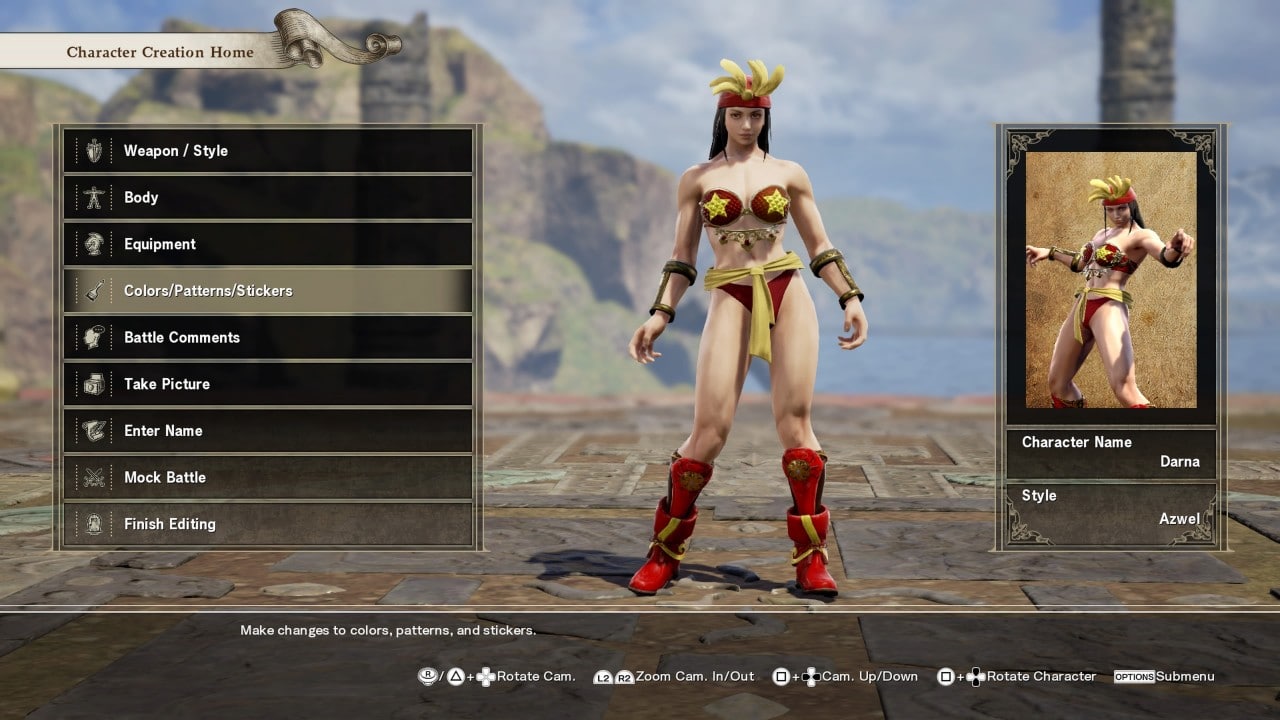
Once you’ve designed your character, you can export them to the network, where other players can face your creations in Libra of Souls through the Astral Fissures.
Speaking of network, there are casual and competitive online modes players can dive into, though it’s pretty barebones, so don’t expect tournament style lobbies and such. Ranked match is your usual competitive ranked multiplayer mode where you rack up Rank Points to rise up through the ranks and be able to fight tougher players. For a more relaxed experience, there’s Casual Match wherein you can search for rooms to fight other players, or create your own room for other players to jump into. Per experience, matchmaking in ranked match takes quite a while before you get matched against another player. Lag is pretty well handled in this game, as long as you fight with players with 3 or above network connectivity rating, but for buttery smooth games, set your filters to 4+, though expect longer matchmaking.
Offline play is pretty limited too, there’s just an Arcade mode, a Versus mode, and Training mode. Training mode is pretty deep, so if you’re a new player, do take time to learn about your chosen character in the training mode.
Then if you wish to dig around the lore of the game, there’s plenty to unlock and explore in the Museum, where you can browse through tons and tons of in-game lore, concept art including that of past games, music and more.

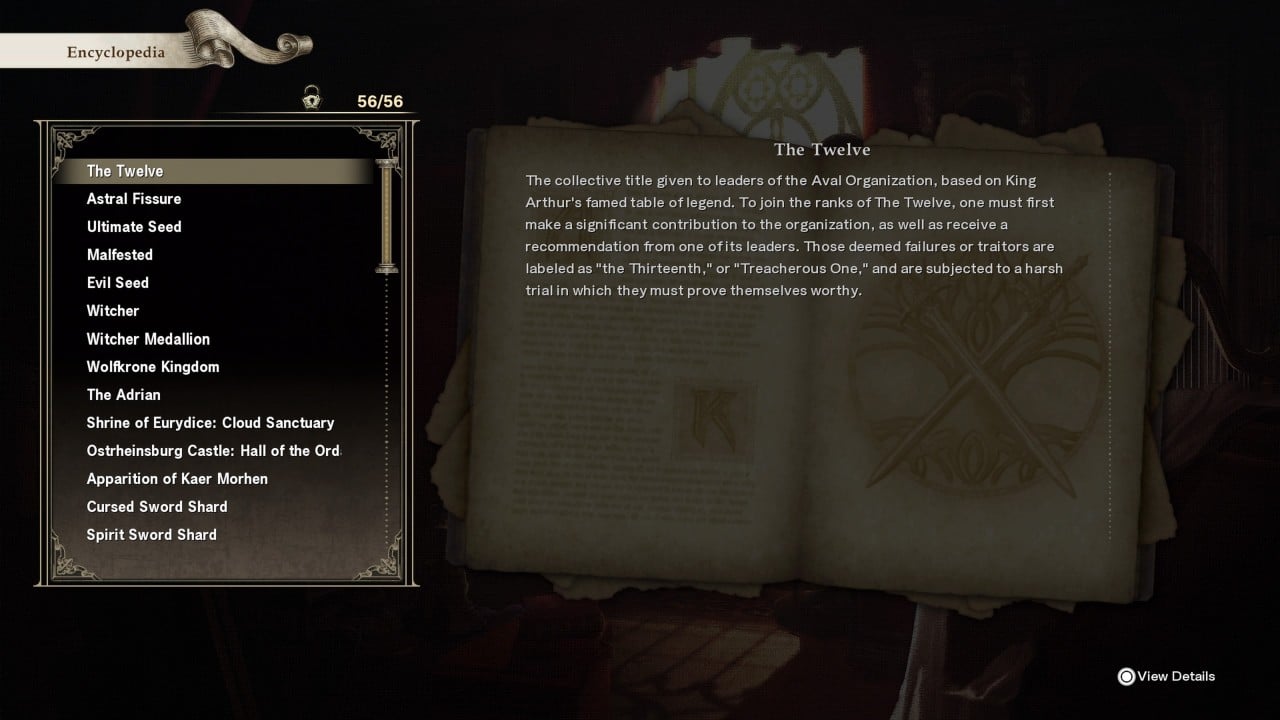
Soul Calibur VI makes use of the Unreal Engine 4 very well, similar to it’s brother Tekken 7. Being a reboot, most character models were designed taking into consideration their original Soul Calibur looks, and are very well detailed as they should be in this generation. Stages bring with them a sort of atmospheric feel, and a certain level of grandiose, with huge statues and wide open plains that serve as fight backdrops.
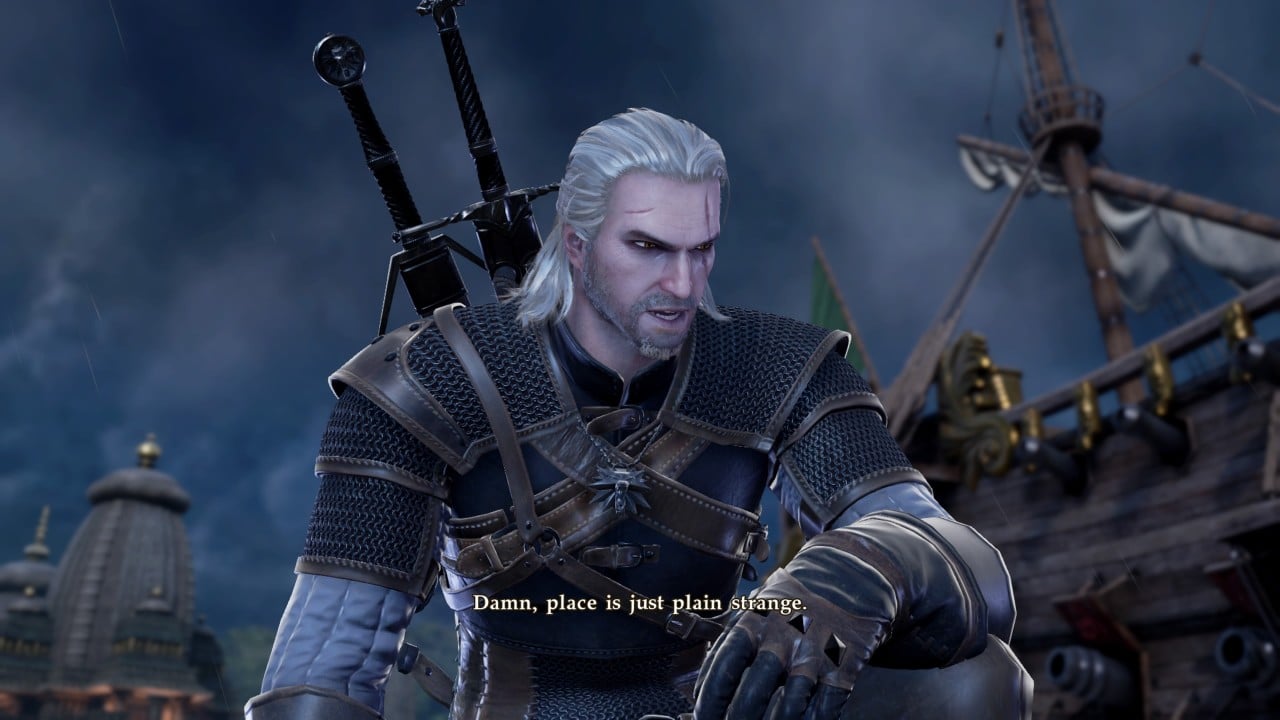
Unlike Tekken though, Soul Calibur VI draws you into the fight by applying a depth of field effect on the background, while maintaining the area of fight itself really sharp. This nifty little touch is a welcome design choice as you’ll be less distracted with things happening in the background while you fight.
Soul Calibur VI runs a perfect 60fps, so fights are fast and fluid. And to make fights more beautiful to look at, there’s no shortage here of hit and particle effects, making for fantastic and powerful sword clashes.

I have minimal comments on sound design, but I really like the soundtrack of Soul Calibur VI – the BGM at the main menu sounds relaxing yet powerful, and the music during fights make it really tense. All while the sound of clashing swords and metal make the fights so much more enjoyable to play and watch.
Soul Calibur VI makes enters the latest gaming generation by returning to its roots (literally), while adding great new improvements we’ve seen in the past games. By focusing on story-building, we are reconnected to the characters of the series we’ve come to love even more, though with a few characters absent. This however leads to the inevitability of more DLC in the future, which players may not like. Geralt is a wonderful inclusion in the roster as he fits the narrative, and the timeline pretty well unlike characters from Star Wars which are definitely OP and OP (out of place and overpowered). All this powered by the Unreal Engine 4, and you got yourself a well designed, smooth and beautiful fighting game.
Even though the focus of this iteration is on the story, delivery is quite lacking due to its use of visual novel type storytelling, with very little use of in game cutscenes. This is unfortunate, and feels like Project Soul had to cut corners. This is further complicated by a barebones multiplayer mode – it is just too simple with only a few modes to play around with. These modes are pretty unrewarding too, instead of unlocking parts for character customization, you earn currency to unlock parts, which are quite limited. However, character customization is quite fun to play around with, and you might even spend long hours just designing your perfect character. Gender specific movement and stances would have been nice though, as it’s quite weird to design male characters that carry female character movesets.
Mainstream appeal however might also pose a challenge, as the local fighting game scene tends to be drawn towards other major fighting game franchises.
Overall, Soul Calibur VI is still a fairly solid fighting game, though being its first entry into this generation (perhaps even the last as the new generation is nearing), it could have packed in quite a few more to excite players, both new and old alike. Though in terms of its core fundamentals, Soul Calibur VI is probably the best in the series.
Also published on Steeps’ personal gaming blog The Electronic Playground.
